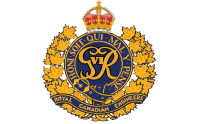Background
The defeat of the Japanese Empire ending the Second World War ended 35 years of Japanese colonial rule of the Korean Peninsula. Japan's surrender led to the dividing of the peninsula into North and South Koreas at the 38th Parallel. The North was occupied by Soviet troops, and the South was occupied by the United States.
Although the initial goal was to reunite the divided nation through diplomacy, the North eventually resorted to using force. The North had built an army built to a significant extent on experienced Korean volunteers fighting in Manchuria in the Chinese Civil War with Soviet equipment. Meanwhile, at US insistence in support of diplomacy, the South Koreans had formed a constabulary force without warfighting capability. Expecting to win in a few days, the Korean People's Army (KPA) crossed the 38th parallel on 25 June 1950.
The United Nations immediately drafted UNSC Resolution 82 calling for all hostilities to end and North Korea to withdraw to the 38th Parallel. A commission was to be established to support this demand, and sanctions were to be brought upon North Korea.
The South Korean capital, Seoul, fell in less than a week and the KPA continued its advance toward the port of Pusan and almost won the war in two days. Led by the United States, the United Nations Security Council asked its members to help. Canada, along with Australia, the United Kingdom, New Zealand, South Africa, India, the Philippines, Ethiopia, France, and other countries sent troops to Korea under a United Nations Security Council resolution. Active fighting ceased three years on 27 July 1953 with the signing of the Korean Armistice Agreement. Between the signing of the Armistice and the end of 1955, approximately 7,000 more Canadians served in the Korean theatre of operations as UN Peacekeepers. A smaller number of Canadian troops remained there during The Cold War until 1957.
Canada's Role
Starting with the deployment of the 2nd Battalion, Princess Patricia's Canadian Light Infantry in November 1950, Canada soon had a brigade of more infantry, armoured, artillery and engineers serving in the 1st Commonwealth Division along with British, Australian and New Zealand troops and by the summer of 1951, the Canadian Army had established the 27th Canadian Brigade Group within the 1st Commonwealth Division.
On 2 October, the US I Corps (four US divisions, the Commonwealth Division and a Korean Division), launched Operation COMMANDO. By 12 October, the JAMESTOWN Line was established just north of the 38th Parallel to protect UN supply lines around Seoul from further Chinese attacks. By 19 October, all Chinese resistance south of the line was defeated. This ended nearly 16 months of manoeuvre warfare. From that point on, a static war, characterized by fixed defences, trench lines, bunkers, patrols, wiring parties and minefields. The Canadians occupied the positions they would hold until the cessation of hostilities.
Although the war was static, it was not inactive. For example, on 23 October, the Canadian brigade launched Operation PEPPERPOT, a three-company raid meant to inflict damage and casualties on the enemy and obtain information about the layout of their positions. One company from each of the three infantry battalions - the PPCLI, the RCR, and the R22eR - attacked Hills 166 and 156 across the Nabu-ri valley and achieved most of their objectives.
On 2 November, the Chinese opened a counter-offensive to retake some of the positions lost to the Commonwealth Division during Operation COMMANDO. As a diversion to the coming attacks to the north, a Chinese battalion raids a 2 RCR platoon position on the Songgok feature, southwest of Hill 187, killing at least 35 Chinese and taking two wounded prisoners for the loss of one Canadian soldier dead and 13 wounded. There was a clear requirement to strengthen Canadian defensive positions.
The RCE in Korea
More than 1300 Sappers of the following Royal Canadian Engineers units served in Korea:
- 57th Canadian Independent Field Squadron: May 1951 – May 1952
- 23rd Field Squadron: May 1952 – March 1953
- 59th Independent Field Squadron (Redesignated as 4 Field Squadron – 16 October 1953): March 53 – March 1954
- 3 Field Squadron: March 1954 – November 1954
The Cost
Of the 26,791 Canadians who served during that period, 516 were killed, 1,558 were wounded, and 33 were taken prisoner. Eleven Sappers were killed. There are 378 Canadians buried at the United Nations Military Cemetery in Pusan.
Gallantry
Over the fighting, officers and men of the Royal Canadian Engineers received ten gallantry awards. In addition, ten Sappers were Mentioned in Despatches. The citation accompanying each award is provided as a start point for telling the story of each soldier's actions leading to the award. We will work to provide the context of each award in relation to the campaign or battle in which the action took place. Additional information is available in Volume III of the History of the Royal Canadian Engineers and in the squadron War Diaries.

